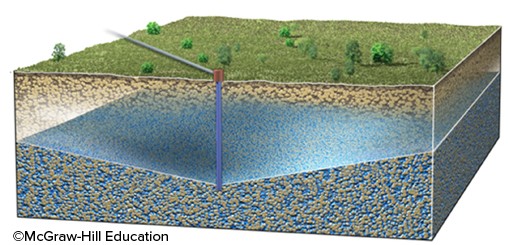Even if populations continue to increase over the next 50 years, fresh water per capita should remain stable. (T/F)
a. true
b. false
b. false
You might also like to view...
What are some effects of building a dam?
A) A stream has more sediment below the dam and so can erode more efficiently. B) The reservoir (lake) traps sediment that over time fills up part of the reservoir. C) A dam, whether constructed by nature or by humans, represents a permanent change in base level. D) The stream erodes into the land instead of depositing sediment, where it enters the reservoir.
What marine resource has been rendered uneconomical due to the cost of excavation?
A) Magnesium compounds B) Manganese nodules C) Sand and gravel D) Salt
In the Rocky Mountain region of the United States, north-facing slopes (downhill direction is toward the north) are typically moister and more heavily forested than south-facing slopes. Why?
A) South-facing slopes receive more moisture and sunlight; rock weathering is slower. B) North-facing slopes receive more sunlight in the summer; snow melts faster and more soil moisture is available for the trees. C) North-facing slopes receive about the same amount of precipitation as south-facing slopes; less moisture evaporates from north-facing slopes. D) South-facing slopes receive less moisture, yet rock weathering is faster.
Which way is groundwater flowing in this cone of depression?
A. upward and away from the well in all directions B. downward and toward the well from all directions C. from right to left across the entire area D. from left to right across the entire area